Lisa and the Devil (1973)
Directed by: Mario Bava
Written by: Alfredo Leone, Francesca Rusishka, Giorgio Maulini, Mario Bava, Roberto Natale, Romano Migliorini
Starring: Alessio Orano, Elke Sommer, Sylva Koscina, Telly Savalas
ITALY
AKA LISA E IL DIAVOLO
AVAILABLE ON BLU-RAY AND DVD
RUNNING TIME: 95 min
REVIEWED BY: Dr Lenera, Official HCF Critic
Lisa Reiner wanders away from her tour group in Toledo and in a shop encounters a man named Leandro who’s purchasing a dummy and a carousel Lisa also attempted to buy. Due to his resemblance to the portrait of the Devil in a fresco she’s just seen, Lisa flees, only to be confronted by the man whose dummy Leandro was buying. He recognises her and calls her Elena, then falls down a flight of stairs to his death. She becomes lost and is picked up by a car containing Francis and Sophia Lehar and their driver George. They agree to take Lisa to her hotel, but then their car breaks down in front of a crumbling mansion, a place where Leandro is the butler, and where the Countess’s son Maximilian also thinks she’s Elena, his lost love….
Lisa And The Devil is to me Mario Bava’s masterpiece, the film where all his filmmaking skills combined with a summing up of his themes to make a beautiful tone poem of love and death that’s also a great movie full-stop, perhaps the most perfect melding of the horror film with the art-house film. Though the more I think about it it seems like in part a far more complex variant on that cheapie creepie classic Carnival Of Souls, it’s one of those films that doesn’t operate on a rational level and, even if you work much of it out, there’s still a lot that isn’t explained. One can pick up bits and pieces, and eventually get some kind of picture of the whole thing, but certain aspects remain shrouded in ambiguity and questions, which makes it all the more enticing to some of us, who are frequently drawn back to its mysteries, its morbid romanticism, its feel of a “waking dream”, its meta-physical leanings – though it’s certainly Bava’s oddest and most defiantly uncommercial work, and films like this often fail to do well at the box office. In fact, Lisa And The Devil was treated in an abominable way by its producer Alfredo Leone, the story of its virtual destruction being one of the saddest accounts of art being ruined for commerciality in the history of cinema, though it does have a happy ending of sorts. Yet it seems to me that this “happy ending of sorts” has overshadowed another issue that surprisingly few seem to have noticed; the fact that the supposedly complete original version which has been available for around 30 years is not complete, nor is it the original version. Now the film is so incredible that thirty or so seconds of footage deleted and substituted hardly causes it any harm. But I do believe that this is something that more folks should be aware of, and the mystery about it.
In 1966 Bava’s Kill Baby Kill screenwriters Giorio Maulini and Romano Migliorini wrote a script entitled la casa diablo aka House Of The Devil, though it seems that a planned film about Victor Ardisson the ‘Vampire Of Muy’, a French graverobber and necrophiliac, and some paintings of the Devil, were also an influence, while some dialogue comes from Doestovsky’s The Possessed. It’s also worth noting that Savalas once claimed that he wrote it! 1972’s Baron Blood, which Bava made for Leone, was so commercially successful that Leone told Bava he could make whatever he wanted with no interference. He co-wrote most of the new script with Bava but failed to credit contributors Romano Migliorini, Roberto Natale, Francesca Rusishka and Giorgio Maulini. Due to being a co-production with Spain, there had to be a Spanish cameraman; Bava chose Cecilio Paniagua, though his perfectionism delayed the production to Bava and Leone’s annoyance. Bette Davis, Anthony Perkins and Ivan Rassimov turned down the parts of the Countess, Maximilian and George respectively and Espartaco Santoni replaced somebody else as Carlo; he was Savalas’s gambling partner and Savalas brought him along hoping Bava could give him a part. However, the superstitious director thought the film was cursed when Davis’s replacement Alida Valli turned up wearing purple which he believed brought bad luck. On the first day of shooting, star Elke Sommer fell over. “It begins” said Bava. He returned to Kill Baby Kill‘s Villa Grazioni for some scenes and studio work was also done in Rome, but most of the shooting was done in a castle just outside Madrid. One day torrential rain caused many of the ceilings to collapse. Luckily cast and crew were filming elsewhere at the time; some of them would have been killed otherwise. The fresco seen at the beginning is not real; it was etched on by Bava’s artists after he’d drawn what he wanted. Bava would often play the well known second movement of Rodrigo’s Concerto per Aranjuez on set to create the right mood; it ended up being used twice in the film as well as getting some variations.
Bava was justifiably proud of the result, but when he took it to Cannes it played to enthusiastic and large crowds, but nobody would actually buy it. If Bava had produced the film, he could have released himself, but it was owned by Leone, who decided to perform an act of butchery. Inspired by the success of The Exorcist, imitations of which were common in Italy at the time, he brought back Sommer for House Of Exorcism. Bava had to film scenes where she was possessed by a demon, with Robert Alda as the troubled priest having to confront her, but Bava sometimes walked off set due to the profanity and Leone took over. The Lisa And The Devil footage was cut down to about an hour, sometimes re-purposed, and omitted the ending. It played as flashbacks, but jars greatly with the new stuff. The utter mess that resulted was unfortunately commercially successful. Lisa And The Devil did get a release in Spain under the title el diablo se lleva los muertos aka The Devil And The Dead, but then disappeared, Then in 1983, three years after Bava died, a print of Lisa And The Devil was released by Leone to be shown in a few festivals, and in 1990 it turned up, double billed with Bava’s Black Sunday, on UK TV, then on video. However, the version that came out on DVD and Blu-ray is different. It shortens a murder and an early sex scene while utilising different shots for the necrophilia scene, us seeing Sommer’s nudity partially, through a veiled screen beside her, rather than directly. It’s no doubt puzzling that House Of Exorcism has the uncensored edits of these scenes. It can be explained away by the original negative disappearing and the restorers having to work with a cut intended for TV. However, the version that I first saw in 1990 contained those extra shots, which is frustrating. Did that version disappear too?
Lisa And The Devil’s beguiling titles show the face of Savalas in front of the frame of a bed which shows up in several Bava productions, then a deck of tarot cards on which the film’s other characters are revealed. The film actually tells you partly what it’s about there and then, and you can’t help but notice that a painting of the devil on a wall has a distinct resemblance to Savalas. Lisa wonders off and encounters Savalas, now called Leandro, in a shop buying a dummy. Running away, Lisa is then approached by the actual person who the dummy was of and accidently kills him. Bava’s camera zooms in on the man’s broken pocket watch – glass smashed out, hour and minute hands crossed – as an omen suggesting that time is no longer a certainty here. She tries to return to where she started, and it’s all quite eerie what with the subtly chilling scoring as she gets hopelessly lost in the [very creepy, despite the daylight] back passages of the town. Eventually it’s night-time, and Lisa seems to have gone into a different time, or even different dimension, as she’s picked up and driven to a strange old mansion where things get even odder. Bava’s mastery of cinema can be shown in the scene in the car, where editing and looks are all that’s needed to convey to us that Sophie Lehar is cheating on her older husband Francis with their driver George, and Francis knows. Lisa soon finds herself in a bizarre triangle of her own when Maximilian, the son of the Countess, thinks she’s his long lost girlfriend, and then Carlo, the man she seemingly killed earlier, also turns up to say she’s her husband. And what’s with Leandro now being the butler, or the mysterious unseen sobbing person locked away in a room, or Lisa’s seeming remembrances of a past life involving the two men, or all this stuff about dummies?
It’s all very confusing for a first time viewer [I still haven’t worked everything out even now], but I remember absolutely loving the spell the film was casting on that first watch back in 1983. Sometimes it doesn’t matter if you don’t understand what’s happening in a film – what’s more important is that you’re into it. The pacing is undoubtedly very slow in the first half, Bava seeming to dwell for ages on scenes which could be over very quickly, but much of the heavy atmosphere would be lost if he’d shortened them. There are fewer scenes which get closer to the death-obsessed morbidity of the Gothic then when Maximilian takes a piece of cake upstairs and goes through a literal Looking Glass into a dark room where he talks to what seems like it could be a corpse; Carlo Savinas’s music here is especially well judged, sombre chords being passed about by the strings while Morricone’s favourite wordless female singer Edda D’ Orso wails most hauntingly. We do eventually get some giallo-style stalking and killing like a repeated running over by car and a bludgeoning where the blood goes all over the camera lens, but Bava mostly goes more for beauty and sadness then typical horror devices. The climactic necrophilia scene may also take place beside a skeleton, but, instead of being horrific and disgusting, it’s a sequence of intense morbid romanticism set to the Concerto per Aranjuez which is the most appropriate backing one can imagine. Then you have what’s one of the single most gorgeous shots in the history of the cinema, the viewer being treated, in soft-focus, to the sublimely beautiful sight of autumnal vegetation covering the house. The story could have ended here and almost did, the cheeky finale added late in the day.
Of course being a Bava film Lisa And The Devil is full of unforgettable shots. A couple kissing reflected in the mirror of a make-up box is a trippy blur of strange shapes. Spilled red wine on the dining room floor shimmers almost translucently until we can see a reflected face in it, similar to a shot in Hercules And The Haunted World in a film which is full of references to Bava’s past work, such as a dripping tap ala The Drop Of Water, yet which is still so unique that it never comes anywhere near seeming like a Greatest Hits package. There’s actually less darkness than usual and less games of light with colours such as blue and pink, showing that Bava may have had less input than usual into the photography. He’s oddly happy to stage much of the action in bright surroundings – even night-time scenes somehow seem to glow – and emphasise both the majesty and decay of his primary location rather than set up weird and wonderful colour schemes of his own, but Paniagua, whose use of soft focus certainly enhances the dreamy mood, is constantly finding new ways to make something look unusual or interesting. There’s something off-kilter about virtually every scene, with small details helping to give the proceedings a dream-like feel even if you don’t notice them, while the camera, which also loves to alight on statues before we cut to another scene, tends to adopt an observing distance or slowly circle round its characters. In fact, the film is full of emphasised circles – notice, for example, how many times we are shown the figures in a musical box going round and round – not to mention the shots where the characters are slowly moving, looking just like said figures., being propelled along rather than moving by themselves.
Lisa And The Devil’s characters seem to exist in some kind of purgatory, especially Lisa/Elena and Carlo who do wrong and therefore seem to have to repeat their crimes over and over again while others suffer the effect of them. Some appear to exist in different times to others, yet still interrelate with them. Most also have their own mannequins at various points, some sporting injuries, which leads to a darkly amusing variant on the Last Supper. In any case, all of Bava’s favourite themes, from major ones like the cyclical nature of violence and the weakness and destruction of the family from within, to less-mentioned but also quite common ones like necrophilia and sexual inadequacy, are here, and usually taken further. Bava’s usual wry, knowing humour is mostly restricted to Leandro, my favourite ever screen portrayal of the Devil. Satan here is a world-weary jester who speaks aloud as if to the audience. He tires of his work and seems to be there just because the others need him, but his humour gets him by. Savalas sometimes appears to exist in his own little film separate from everyone else, but his scenes give the mostly very heavy-going proceedings some levity, whether he’s sticking one of his lollipops into a dummy’s head or breaking the legs of a corpse so it fits into the coffin. Yes, he’s frequently sucking on lollipops, and before Lt Theo Kojak adopted the habit. Depending on who you believe, Savalas had just given up smoking and therefore needed the lollipops as a sort of substitute, or he didn’t like the sweets his character was supposed to be consuming and changed them to lollipops.
Is Sommer an unsatisfying Lisa? It’s hard to say, seeing as Lisa herself is hard to pin down. Rarely pro-active, she has to suffer for the sins of her past incarnation[s] which essentially wrecked a household, and the script doesn’t allow us to feel her great tragedy. As written, Sommer does okay in the part even if she doesn’t really have a character to play and things just happen to her. Savina’s music score is such an important ingredient in Lisa And The Devil; elegant, gorgeous and uncanny without really ever becoming typical horror film music. The two major themes – a lovely Ennio Morricone-like piece with D’ Orso again, and a music box tune, are both based on the Concerto per Aranjuez but don’t feel like lazy plagiarising. The moody suspense material is varied enough to make for a fine listen when the soundtrack, seemingly lost for many years, finally got a proper release early 2022 – which is sort of appropriate considering the film it supports. It still seem destined to remain a bit obscure, to be ignored by snobby art-house types who will salivate over anything by someone like Federico Fellini and ignore stuff from people like Bava because they mostly worked in often disreputable genres like horror, yet which is often just as worthy of being treated with respect. By contrast, horror fans, because the genre can result in such widely different work, are often some of the most open-minded film-lovers you can get, so are often more willing to embrace such films. I once reviewed Death In Venice, regarded by many as a great work of art. Lisa And The Devil is just as worthy of being called one.
Rating: 










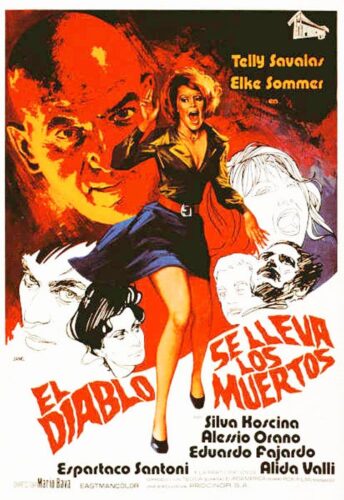
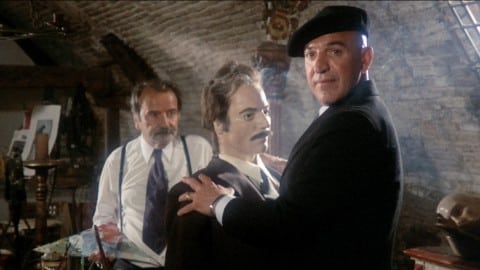
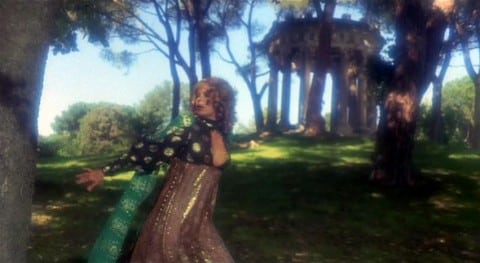
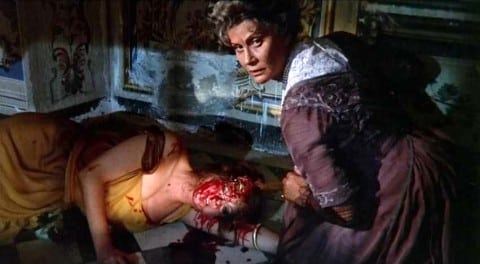



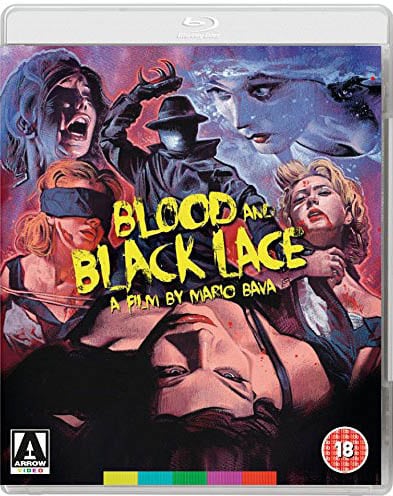
Be the first to comment